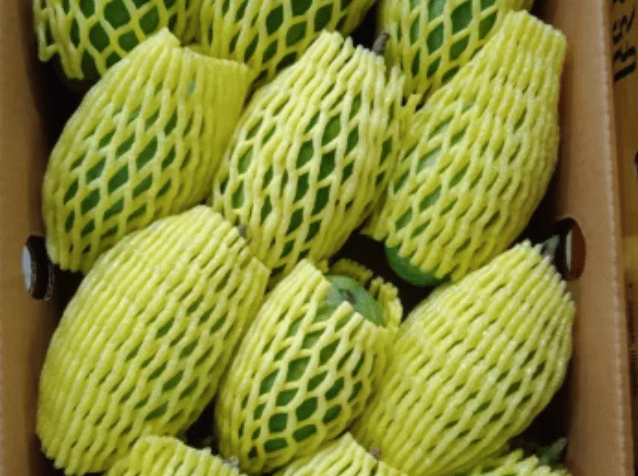Call Us : +91 83209 96560 +91 90029 00592 Mail Us : contact@vhamoverseas.com
Mango
Visual Specifications
Size and Weight:
Uniform size based on variety (200–500 grams per fruit).
Market preferences often favor medium to large sizes.
Color: Mature but not fully ripe. Skin color depends on variety (e.g., yellow, green, red-blushed).
Shape:
Symmetrical, free from deformities.
Oval, round, or elongated, depending on the variety.
Skin Quality: Smooth, clean, and free from blemishes, cracks, or wrinkles.


Internal Quality
Flesh Texture:
Non-fibrous or minimal fiber, depending on variety.
Firm but softening as it ripens.
Taste and Aroma: Sweet and rich flavor with a pleasant tropical aroma.
Brix Level: Sugar content typically 12–22%, varying by variety.
Seed: Fully developed but not overripe, free from damage.
Shelf life: varies by variety but typically ranges from 2–4 weeks.


Packaging, Handling & Compliances
Packaging:
Packed in ventilated cartons or boxes, usually 4–5 kg capacity.
Cushioning material to prevent bruising.
Protection:
Individually wrapped or layered with paper for added protection.
Avoid overpacking to reduce pressure on fruit.
Labeling: Clear labels with variety, weight, origin, and certifications.
Ripening: Ripens evenly to a sweet and juicy state at the destination.
Free from pests, diseases, and residue (e.g., black spots, anthracnose).
Compliance with international phytosanitary standards (e.g., USDA, EU, Codex Alimentarius).
Certification: Organic, GlobalG.A.P., or Fair Trade if required.


